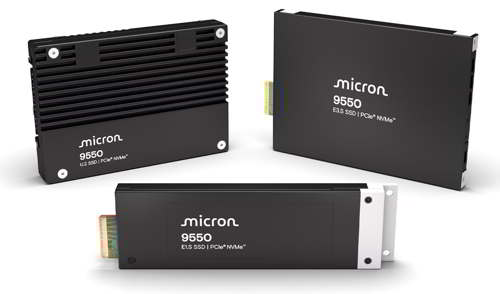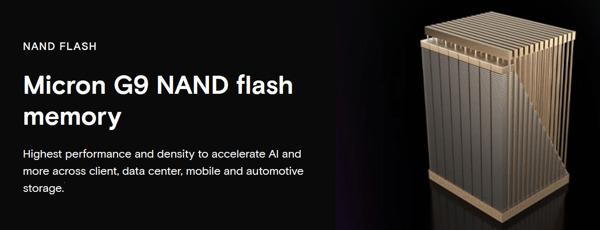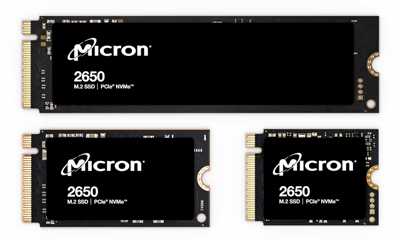Flash Forward: Celebrating 40 Years of Memory Innovation
Flash has revolutionized industry by providing reliable and efficient means of data storage.
This is a Press Release edited by StorageNewsletter.com on December 30, 2024 at 2:02 pmIf you’ve ever forgotten something, then you know firsthand the limits of human memory. Our first attempts at storing information can be traced back to Paleolithic tribespeople who would mark notches into sticks or bones to keep track of supplies and trading activity.
Thankfully, storage has evolved past sticks and bones. Today, we use something called flash memory.
What is flash memory, and why is it everywhere?
Whether you realize it or not, flash memory is everywhere. It’s in your smartphone; it’s in your digital camera; and it’s even in your car. Without it, many of the technological conveniences we enjoy today would fail to operate. But what is flash memory, and why is it so ubiquitous?
As we celebrate the 40th anniversary of flash memory, we will answer these questions, exploring the technology’s impact and Micron’s role in its development.
How does flash memory work? A look inside the technology
To start, let’s define flash memory: It’s a type of non-volatile storage that retains data even when the power is turned off. This differs from volatile random access memory (RAM), which loses data after power is cut.
Non-volatile storage has come a long way since it was first developed. Before flash, data was stored in chips called erasable programmable read-only memory, or EPROM. A series of innovations from EPROM to present-day flash memory, have paved the way for compact, reliable storage solutions like USB drives, memory cards and SSDs.
Invention of flash memory: Game-changer in data storage
While EPROM allowed for long-term storage, it had several disadvantages, including high costs and heavy power consumption. Additionally, the stored bits had to be completely erased with UV light before being rewritten with new data.
For decades, EPROM was the standard storage method for most electronics. But as you can imagine, manually erasing and rewriting information was not very efficient.
That’s why in the 1980s, Dr. Fujio Masuoka of Toshiba began searching for an alternate technology. He and his team eventually developed a storage device that erased data so fast it was like the flash of a camera: flash memory.
Why flash memory is essential in modern devices
Since then, flash has revolutionized the industry by providing a reliable and efficient means of data storage. It operates using a grid of cells, each containing a floating or replacement-gate transistor. These transistors can hold an electrical charge, representing binary data (0s and 1s), which read and erase data.
“With flash being now electrically erasable and programmable, you have this ability to be very nimble, from a system design and a testing perspective, as you’re developing new products,” said William Stafford, director, marketing, Micron.
Because of its nimbleness, flash is a versatile and essential component in many modern electronics. Mobile devices, for example, use flash memory to store data such as the OS, photos and apps. In modern vehicles, flash stores critical information like navigational maps, calibration settings and user preferences for infotainment systems.
Types of flash memory: NOR versus NAND
There are 2 types of flash memory, each with distinct applications. NOR flash, which features a ‘not OR’ logic gate, has fast read speeds and random-access capabilities useful for reading small data sets and actually executing code (software). This memory type is found in basic technology like microcontrollers, industrial equipment and automotive electronics.
On the other hand, NAND, which uses a ‘not AND’ logic gate, has a fast write speed and a large storage capacity. It is used in tech that requires large amounts of data and code storage, such as laptops, mobile devices and data centers in products like SSDs.
Micron’s journey in flash memory: From RAM to global storage leadership
Selling both NAND and NOR storage solutions, today Micron is a global leader in flash memory. But it may surprise you that Micron had a late start to storage products in the industry. It 1st came to the NAND flash memory scene in 2006 when it entered a joint venture with Intel, known as IM Flash Technologies.
Because Micron already had a long history of producing SRAM and DRAM memory devices, flash memory solutions fit right into its business model as, in many cases, both technologies are required in the same system.
“Micron’s always had visionary leaders, knowing that memory and storage would march together,” Stafford said. “If you have lots of code running and lots of data coming through DRAM, you need somewhere to store that. So that’s why they pulled all that together to come up with the full solution.”
Micron is first to ship industry’s 9th-Gen NAND in SSD with Micron 2650
3D NAND technology: How Micron is pushing storage limite
In 2015, the team unveiled their 3D NAND technology, which stacks memory cells vertically to increase storage density and reduce costs. In 2020, Micron began volume shipments of the world’s first 176-layer 3D NAND flash memory, achieving unprecedented, industry-pioneering density and performance. Building on the success of its 3D NAND technology, the company delivered the world’s first 232-layer NAND in 2022, setting a new standard for storage density and performance. These innovative developments have unlocked new opportunities in client, mobile and data center markets.
Matt Wokas, sales enablement manager, Micron, who worked with flash in its early stages, said he anticipates these layers will continue to grow. ”The industry started with 24 layers and now is running 10 times higher,” Wokas said. “Future improvements will lead to increased layers to fit much more data.”
By stacking more layers in NAND flash, manufacturers can fit more data in the same physical footprint, allowing smaller devices (e.g., smartphones, tablets, IoT devices) to hold more storage without needing larger storage components. For larger-scale applications, like data centers, this means potentially more data can be stored per square foot, enhancing space efficiency. Micron’s 9550 SSD is an example of innovations and advancements in 3D NAND technology. It is designed to manage critical workloads requiring extreme speed, scalability and power efficiency, such as AI, performance-focused databases, caching, online transaction processing (OLTP) and high-frequency trading. The 9550 SSD enables these workloads and more for flexible deployment in cloud, data center, OEM and system integrator designs.
Micron’s 9550 SSD is an example of innovations and advancements in 3D NAND technology. It is designed to manage critical workloads requiring extreme speed, scalability and power efficiency, such as AI, performance-focused databases, caching, online transaction processing (OLTP) and high-frequency trading. The 9550 SSD enables these workloads and more for flexible deployment in cloud, data center, OEM and system integrator designs.
Micron’s NOR flash innovations and applications
Micron’s NOR devices, which the company began developing in 2010, are also widely recognized for their high performance and reliability. They are used in a wide array of applications, including automotive, industrial, consumer and networking.
These devices offer fast read speeds and low power consumption, making them ideal for high-performance applications that demand efficiency.
40 years of flash memory innovation: Micron’s impact and vision
Overall, Micron’s history with flash memory is marked by continuous innovation, strategic growth and a commitment to providing high-performance and reliable memory solutions for a wide range of applications.
Today we have an expanded portfolio of memory and storage products, including purpose-built SSDs, such as the world’s 1st automotive-grade SSD with quad ports and SR-IOV (4150AT SSD), built to accelerate data-rich autonomous and AI-enabled vehicle workloads.
As we look back on these 40 years of flash memory, we recognize the substantial advancements we’ve made in building lasting storage solutions. Modern NAND flash can store TBs of data in a single device. That is millions of times more data compared to the early memory cards. NAND flash is now ubiquitous in a wide range of devices, from smartphones and laptops to enterprise storage solutions and cloud computing. It plays a crucial role in enabling technologies like AI, big data and IoT. And the future remains bright for Micron with G9, our 9Gen 3D NAND technology. This technology provides up to 50% faster data transfer rates and significantly higher read and write bandwidth compared to competitors. It is designed to meet the demands of data-centric workloads, from AI to cloud computing.
However, we also realize how much further we can go. Micron will continue to innovate and develop cutting-edge technologies to transform how the world uses information to enrich lives for all.
“I think Micron right now has probably the best portfolio of products I’ve ever seen from this company. Over the last few years, we have become the technology leader in both flash chips and solid state drives,” Wokas said.
Resources:
Information on Micron NAND flash
Information on Micron NOR flash

















 Subscribe to our free daily newsletter
Subscribe to our free daily newsletter


